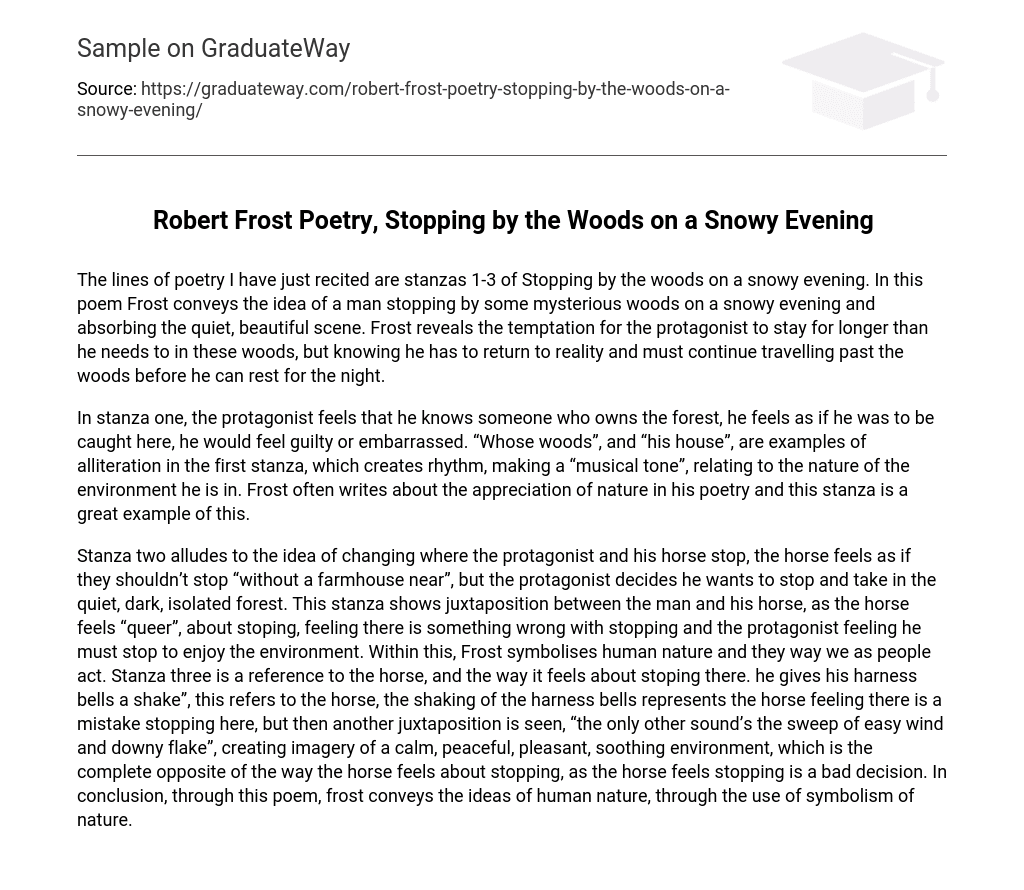The lines of poetry I have just recited are stanzas 1-3 of Stopping by the woods on a snowy evening. In this poem Frost conveys the idea of a man stopping by some mysterious woods on a snowy evening and absorbing the quiet, beautiful scene. Frost reveals the temptation for the protagonist to stay for longer than he needs to in these woods, but knowing he has to return to reality and must continue travelling past the woods before he can rest for the night.
In stanza one, the protagonist feels that he knows someone who owns the forest, he feels as if he was to be caught here, he would feel guilty or embarrassed. “Whose woods”, and “his house”, are examples of alliteration in the first stanza, which creates rhythm, making a “musical tone”, relating to the nature of the environment he is in. Frost often writes about the appreciation of nature in his poetry and this stanza is a great example of this.
Stanza two alludes to the idea of changing where the protagonist and his horse stop, the horse feels as if they shouldn’t stop “without a farmhouse near”, but the protagonist decides he wants to stop and take in the quiet, dark, isolated forest. This stanza shows juxtaposition between the man and his horse, as the horse feels “queer”, about stoping, feeling there is something wrong with stopping and the protagonist feeling he must stop to enjoy the environment. Within this, Frost symbolises human nature and they way we as people act. Stanza three is a reference to the horse, and the way it feels about stoping there. he gives his harness bells a shake”, this refers to the horse, the shaking of the harness bells represents the horse feeling there is a mistake stopping here, but then another juxtaposition is seen, “the only other sound’s the sweep of easy wind and downy flake”, creating imagery of a calm, peaceful, pleasant, soothing environment, which is the complete opposite of the way the horse feels about stopping, as the horse feels stopping is a bad decision. In conclusion, through this poem, frost conveys the ideas of human nature, through the use of symbolism of nature.





